Our Host this month is Susan of Wild Yeast and on a very special day for her she chose to bake Stollen with us.
I came to know Stollen many years ago from my friend Jakob's mum and after so long I baked it again.
Sometimes Stollen has a marzipan roll inside which I'm not too fond of, so I enjoied this 'empty' version really much.
RECIPE
Stollen
Yield: 1500 grams (3 loaves, more or less)
Time:
- Candy and dry citrus peel: 12 hours or more (can be done ahead)
- Soak the fruits: 12 hours
- Mix and ferment sponge: 12 hours (can be simultaneous with fruit-soaking)
- Mix dough: 20 – 30 minutes
- First fermentation : 30 minutes
- Preshape, rest, and shape: 30 minutes
- Proof: 90 minutes
- Bake: 30 minutes
Sponge Ingredients:
- 120 grams flour
- 80 grams water
- 0.1 gram (small pinch) instant yeast [or 0.13 g active dry, or 0.25 g fresh]
Soaked Fruit Ingredients:
- 130 grams raisins
- 75 grams dried cherries (or more raisins, or chopped dried apricots, or a combination)
- 61 grams candied orange peel
- 92 grams candied lemon peel
- 82 grams slivered almonds
- 34 grams rum
Final Dough Ingredients:
- 348 g flour
- 53 g milk
- 25.3 grams (2 Tablespoons + 2 teaspoons) instant yeast [or 18.6 g osmotolerant, or 31.6 g active dry, or 63.3 g fresh]
- 8 g (1-1/3 t.) salt
- 8 g (2-1/3 t.) diastatic malt powder (omit if you don’t have it)
- 51 g sugar
- 50 g egg (about one large egg)
- 5 g grated lemon zest (one average lemon)
- 5 g grated orange zest (one small orange)
- 1/3 t. of each of these ground spices: cinnamon, cardamom, cloves, allspice, nutmeg
- 273 g unsalted butter, at room temperature (should be pliable)
- all of the sponge
- all of the soaked fruits
Finishing Ingredients:
- clarified butter
- fine granulated sugar
- powdered (confectioner’s) sugar
Method:
- Toss the soaker fruits with the rum in a medium bowl. Cover and leave at room temperature for about 12 hours.
- Meanwhile, combine the sponge ingredients in another medium bowl. Cover and ferment at room temperature for 12 hours.
- In the bowl of a stand mixer with a dough hook, combine all of the final dough ingredients except the soaker. Mix in slow speed until all the ingredients are incorporated.
- Continue mixing in medium speed until the gluten reaches full development. The dough should come together around the hook and should no longer stick to the sides and bottom of the bowl. This could take about 25 minutes or more, but will depend on your mixer.
- Add the soaked fruits and mix on slow speed just until they are evenly distributed through the dough.
- Transfer the dough to a lightly buttered container. Cover and ferment for 30 minutes at room temperature.
- Turn the dough onto the counter. Divide into three pieces, or however many you would like. Preshape the dough into balls and let them rest, covered, for 30 minutes.
- To shape each loaf: Form a blunt-ended batard and dust it lightly with flour. With a thin rolling pin, press down firmly, separating the dough into two parts with one slightly larger than the other. Roll out the flap of dough connecting the sections so it is about 2 inches wide. Flatten the larger section slightly with your hand, then fold the smaller section over to rest on the larger one.
- Place the loaves on parchment-lined baking sheets (two per sheet) and slip them into a large plastic bag with a bowl of warm water. Proof for about 90 minutes, replenishing the water when it cools.
- Meanwhile, preheat the oven to 375 on convection setting or 400 on regular bake setting. You will also need steam during the initial phase of baking, so prepare for this now.
- Bake for 10 minutes, open the oven door briefly to allow any remaining steam to escape, and bake for another 20 minutes. If you do not have convection, you may need to rotate the position of the baking sheets halfway through the bake to ensure even browning and keep the one on the lower rack from burning on the bottom.
- While the loaves are still warm, brush them with clarified butter. Dredge them in fine granulated sugar, brushing or shaking off the excess.
- To finish, sift powdered sugar over the loaves.
- Cut when completely cool. You can leave the stollen out overnight to let the loaves dry and the sugar crust up a bit.

















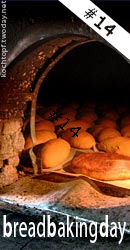
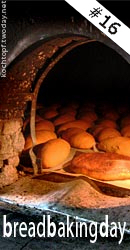
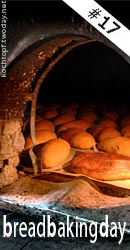




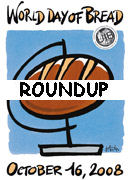


























































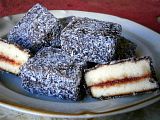






.jpg)











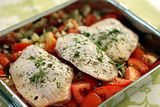

.jpg)






































11 comments:
Ciao Natalia, il tuo stollen è perfetto. Buone feste!
Empty version .... that's rich. I loved this one ... but now after all the girls talked about the marzipan I'm wanting to try that.
That's a beautiful looking bread. Reminds me of a similar Christmas Greek bread called Christopsomo (Christ's bread). Wishing you and your family a Happy New Year, with health, joy, happiness and success in whatever you are doing.
A beautiful loaf Natalia! Glad you baked with us this month...and isn't it nice to bake again a bread you have made in the past?
A splendid stollen! I would love a slice of it right now.
Best wishes for 2012!
Cheers,
Rosa
I hope you had a good Christmas!
I never heard of stollen with marzipan inside! (I am not a marzipan lover - just like the way it looks and what you can do with it!) Picture-perfect stollen - thinking it's beyond me - I on't seem to have a daring baker gene - but every time I see what you all come up with - I wish I did!
What a lovely looking stollen! I bet your family enjoyed eating this.
Your Stollen looks beautiful! And I'm with you. I prefer the empty version (even though I haven't tried the other one) - I'm not at all a fan of marzipan.
I'm glad you liked this version! It looks wonderful. Thank you for baking with us this month!
Haha Natalia, there are empty lovers and haters in our family so I just bake a full one and the love gets handed out!
Your stollen looks lovely!
Post a Comment